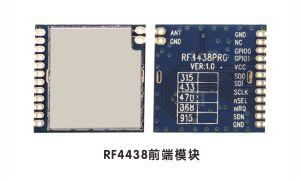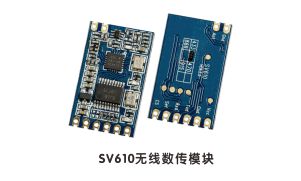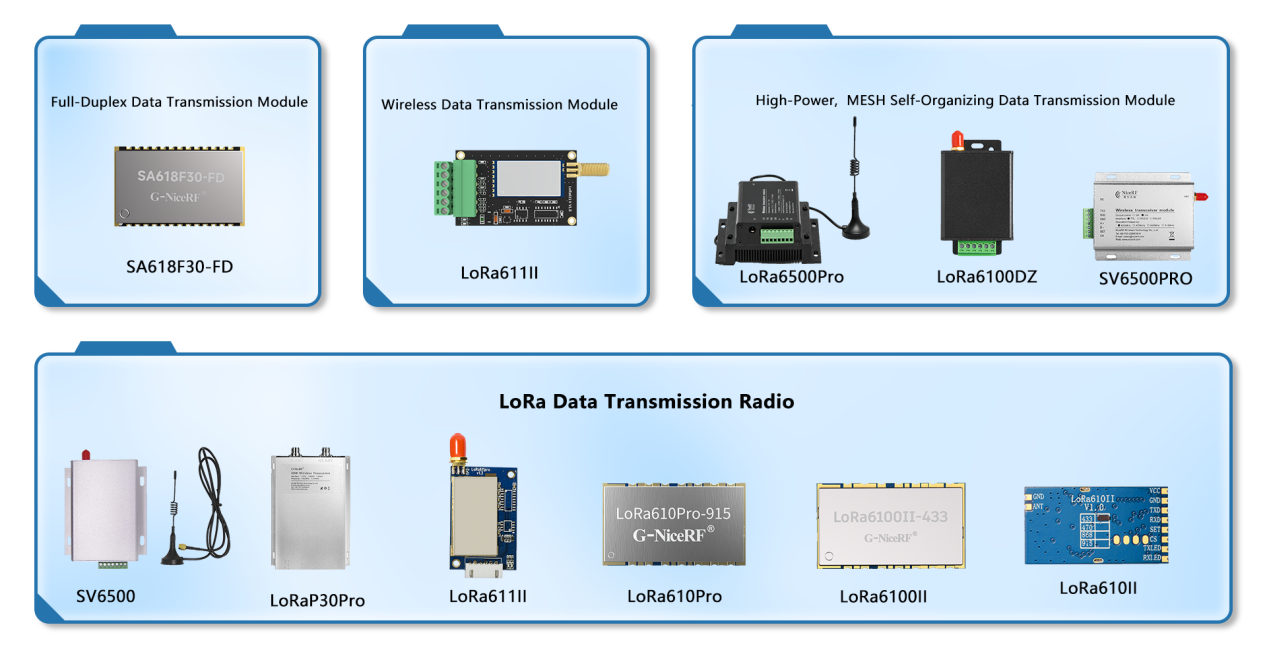Choosing the right wireless module for your project
There are many brands and types of wireless chips currently on the market. Related manufacturers have done a lot of module sbased on these wireless chips. Developers unfamiliar with the field of wireless transmission may encounter some difficulties when choosing the right wireless module for the project. This article responds to the difficulties that developers may encounter.
First of all, it must be clear that all wireless chips are used to transmit data. Although the transmission methods are different due to the difference in chips, in general, the tasks completed by these modules or chips are the same, that is, transmitting data.
At present, there are two major types of wireless transmission modules on the market: front-end and digital transmission modules. Take the wireless RF4438 front end module as an example. This moduleis based on the SI4438 ASK chip developed by Silicon Labs. It has no MCU insideand has extremely low receiving sensitivity (-124 dBm), plus the industry-leading output power of +20 dBm. Which ensures extended range and improved link performance. At the same time, the built-in antenna diversity and frequency hopping support can be used to further expand the range and improve performance.
Taking the wireless SV610 wireless data transmission module as an example, it also integrates the high-performance RF chip of Silicon Labs in the United States, and an MCU for controlling communication. The sensitivity of this digital transmission module is thesensitivity of the integrated wireless chip.
After briefly introducing the wireless front end and wireless data transmission, some readers may still not be able to tell the difference between the two.
In fact, it can be distinguished accordingto the difference between the kind of modules. The front-end module is composed of a wireless chip plus corresponding peripheral matching circuits. Developers need to write the corresponding driver according to the chip's referencemanual, and then write the corresponding control logic according to the needs of the business. Considering the timing of the project, developers can try this method when the project has more time. At this time, the developer should carefully read the reference manual of the chip, and then refer to some demo programs to quickly complete the development of wireless functions. However, itis not recommended to use the front-end module when the project time is urgent.Due to the characteristics of the front-end module, its price is slightly lower than the digital transmission module.
As for the data transmission module,because it has integrated MCU internally, it can receive external data, and developers do not need to care about how to write a driver, and can be easily integrated into their own projects. Through the external interface of the output module (such as TTL interface, RS232 interface \ RS485 interface), you can directly input the corresponding data to the digital transmission module.This can save a lot of development time because developers do not need to writedrivers themselves, and avoid many potential errors caused by unfamiliarity with wireless chips, which simplifies the development process. Because the MCUand the corresponding control program are integrated inside the data transmission module, its price is slightly higher than the front-end module.
Compare the difference between the two with a table:
| Item/Module type | Front end module | Digital transmission module |
| Price | low | high |
| Whether need a driver | Yes | No |
| Size | Small | Big |
| Power Consumption | Depended an the integrated chip | Depended en the use method |
| Application filed | Vary | Vary |

wireless RF4438 front end module

SV610 wireless data transmission module
I believe that after reading the introduction above,developers will have a clear understanding of the data transmission module of the front end module, and will know what kind of module they should choose inthe project.
 +86-755-23080616
+86-755-23080616
 sales@nicerf.com
sales@nicerf.com
Website: https://www.nicerf.com/
Address: 309-314, 3/F, Bldg A, Hongdu business building, Zone 43, Baoan Dist, Shenzhen, China




